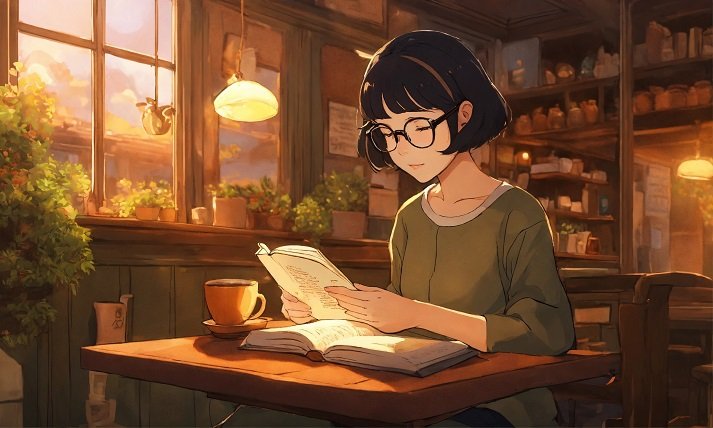Introduction
With its wide range of genres and gripping stories, manga, the Japanese art form of storytelling through graphic books, has enthralled readers all over the world. My own experience with manga started out as a casual interest but soon developed into a devoted investigation of this distinctive medium. In this blog post, I’ll discuss my experiences and observations about the world of manga, delving into its fascinating past, cultural relevance, and appeal to readers just like my reading Manga.
The Beginnings of My Manga Journey
I stumbled into manga by accident one leisurely afternoon while perusing a friend’s book collection. I was intrigued to turn the pages of a “Naruto” volume after seeing its colorful my reading Manga. I had no idea that this would be the beginning of a long-lasting love affair with manga. I was drawn in by the compelling plot, the vivid artwork, and the nuanced character development. I had never heard of this kind of storytelling before, but it spoke to my passion for both narrative and art.
Discovering New my reading Manga
My interest in manga expanded along with my hunger for its different genres. Every genre provided a different perspective on the world, from the intense action sequences of shōnen to the delicate feelings of shōjo. Seinen manga offered a more sophisticated viewpoint, frequently addressing difficult subjects and presenting characters with more depth. I was taken to unimaginable places by the fantastical worlds of Isekai, in the meantime. Within the constraints of a few panels on a page, each genre exposed distinct aspects of the human experience.
Manga vs. Anime: A Reader’s Perspective
Although anime uses color and motion to bring manga to life, reading manga is a very personal experience. Because the reader sets the pace for consumption, manga offers a more intimate relationship between the reader and the characters. Manga reading is an introspective experience because the stillness of the frames allows the reader’s imagination to fill in the blanks. Moreover, because manga is not limited by the running times of anime episodes, it frequently has more intricate story arcs and character development.
The Artistic Expression in Manga
Manga is an artistic medium as well as a storytelling tool. Manga artists employ several techniques such as line work, panel arrangement, and character expressiveness to effectively portray emotions and actions. With the artists’ distinct styles serving as their signatures, the stark black and white illustrations have the potential to be just as dramatic as any my reading Manga. Manga artwork can be elaborate and realistic or simple and exaggerated, each style contributing to the story in a different manner.
Cultural Impact of Manga
Manga has had a significant global and Japanese cultural influence. Fashion, cinema, and even language have been impacted by it; phrases like “otaku” and “kawaii” have entered the common language worldwide. Manga titles such as “Sailor Moon” and “Dragon Ball” have become cultural icons, influencing millions of people’s childhoods and spawning a new wave of creators.
Manga as a Window to Japanese Society
Manga provides an insight into Japanese society and its ideals through its themes and stories. It captures the mood, historical developments, and social issues of the day. Manga like “Oishinbo” explores the nuances of Japanese cuisine and culture, while “Shingeki no Kyojin” (Attack on Titan) explores themes of independence and survival. These tales serve as a literary bridge across cultural divides, promoting appreciation and understanding.
Digital vs. Physical Manga
Manga is a topic of dispute between digital and physical formats: convenience vs experience. Thousands of volumes of digital manga can be stored on a single device, making them easily readable and portable. However, digital forms are unable to duplicate the sensory experience that physical manga offers—the feel of the paper, the scent of the ink. There are advantages to each format, and many readers find a use for both in their daily lives.
Manga Communities and Fandom
Manga communities are lively and varied; they include local clubs, social media groups, and internet forums. Fans can celebrate their favorite shows in these areas, exchange recommendations, and talk about theories. Manga lovers can also be seen in the cosplay community, where participants dress up as characters to bring them to life. Manga reading is enhanced by the sense of community and common enthusiasm found in these groups.
Conclusion
Manga has accompanied people through many life stages and has been more than just a hobby. It has inspired creativity, given me a getaway, and taught me valuable things. I’ll end by extending an invitation to you to explore the world of manga and find its many wonders for yourself. There is a manga out there waiting for you, regardless of your preferences for action, romance, or a complex plot.
FAQ
What is manga?
Manga is a type of Japanese graphic novel or comic book with a distinct aesthetic and fan base.
How is manga different from comic books?
Manga is usually printed from right to left, has a specific Japanese graphic style, and is printed in black and white.
Where can I start reading manga?
Start with genres that you are interested in and search for well-known books like “My Hero Academia,” “One Piece,” and “Naruto.”

